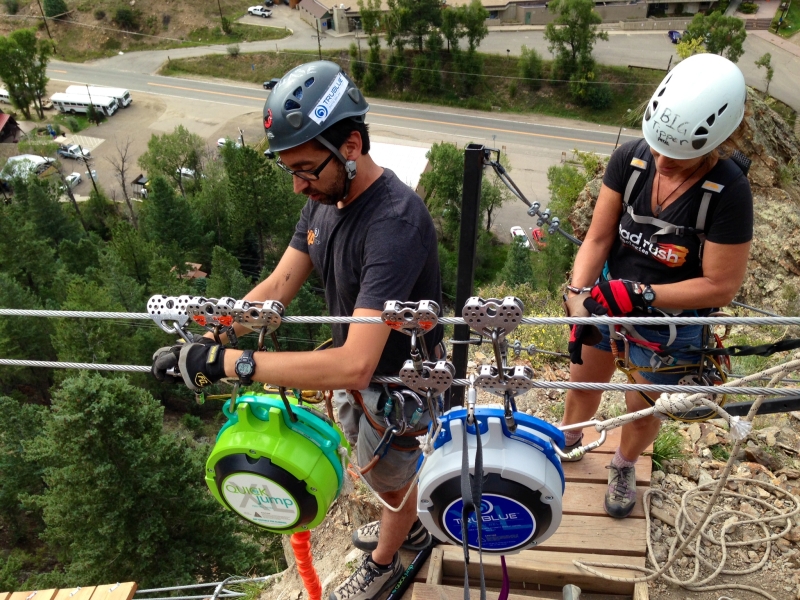Incorporate a QuickJump / QuickFlight Into Your Ropes Course.
We are always looking for new ways to integrate our devices into existing recreation or adventure industries, like adding the QuickJump / QuickFlight Free Fall Devices into Ropes Courses. Here are some ways to use a QuickJump / QuickFlight to set your facility apart.
How to Use a QuickJump / QuickFlight in a Ropes Course
The options for adding a QuickJump / QuickFlight into a ropes course are endless. You just need a platform to jump from, the ability to mount the device at least 26 feet from the ground and safety protocols to make sure participants are properly clipped in before jumping.
Here are just a few ideas for adding a QuickJump / QuickFlight Free Fall Device to your ropes course:
- Have a QuickJump / QuickFlight at the end of a high course that gets participants back down to the ground
- Build QuickJump / QuickFlights in throughout the course to get from high to low elements.
- Allow participants to climb up and jump down as many times as they'd like during their allotted course time.
- Use the QuickJump / QuickFlight as ancillary revenue, "adding on" a jump to their other activities.
- The QuickJump / QuickFlight is modular and compact, with high throughput and low operational costs. It can be installed in almost any high location. Because of the ease of installation, you can keep your course fresh and fun by moving the QuickJump / QuickFlight or modifying the attraction.
What are Ropes Courses?
Ropes courses are often used for recreation, personal development or team building, and can be found indoors or outdoors. The courses are designed to be exhilarating and challenging and often include some elements high off the ground mixed with some lower features. Some courses only include low-lying elements, or only elements far off the ground. The beauty of ropes courses is they are generally accessible to people of all ages and fitness levels. Some courses are built purely for experiential learning or other specific purposes like youth camps.
Ropes courses are sometimes also referred to as challenge courses, obstacle courses, team courses or low ropes. Some ropes courses are referred to as aerial or adventure parks or courses, but these are often more recreational than transformational and more common in Europe than the U.S. This trend is starting to change, and ropes courses are popping up around the globe. Every ropes course you visit will be different and have features unique to that location.
Even though the basic premise for ropes courses have been around for a long time, for things like military training, the modern ropes course started to take form around 1980 and considerable growth has occurred since then. People are quickly seeing how fun these courses are and the value they bring to team-building, developing communication and leadership skills, and building self-esteem. Some courses are designed and marketed toward team building for groups, companies and organizations, while others position themselves as a fun, family-friendly activity, but most courses could satisfy either use.
Safety is now a primary concern and the focus of ropes course construction. Ropes course participants are attached to life-safety devices or belay-type devices to ensure a fall off the course won't be dangerous (or as dangerous as an untethered fall). Participants are required to wear climbing harnesses and with the development of industry-related standards, the ropes course industry is advanced in its use of engineering, risk mitigation and ecologically-sound construction. Many courses use a variety of structures, including trees, utility poles, platforms, ropes and steel structures.
But even with the basic framework of what a ropes course is and how to ensure safety, there are many ways to make your ropes course unique and special. One way is to incorporate a QuickJump / QuickFlight Free Fall Device into your design.














